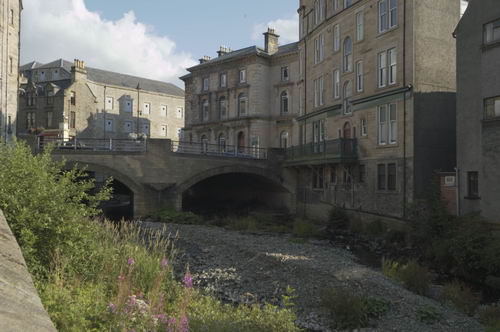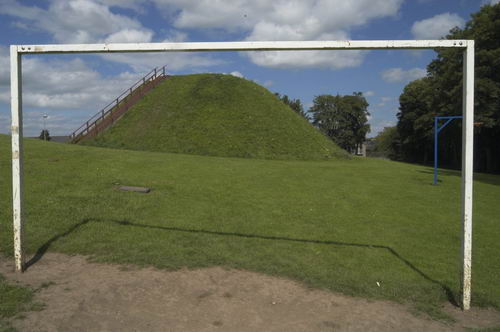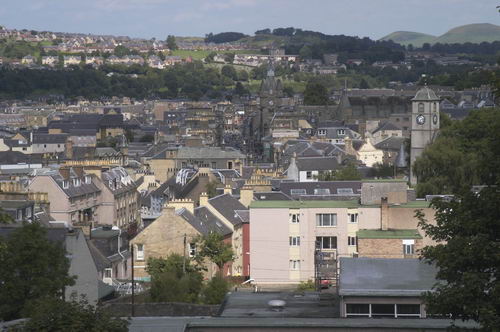
Bridge over the Slitrig, Hawick
Hawick (pronounced Hoyk) is one of the larger towns in the Scottish borders area. The boundary between England and Scotland runs roughly north-east, and although Hawick is a few miles north of it, it is still some way south of such places as Berwick upon Tweed.
The first people known to have lived there were Angles, who forced out the earlier inhabitants and made a settlement where two rivers met and gave some protection. The Hawick slogan 'Tyribus ye Tyr ye Odin' may be a corruption of their war cry, calling for the help of Thor and Odin to defeat their enemies. Those born in Hawick are known as Teris.

The Motte, Hawick
The whole area around was a scene of bloody feuds for hundreds of years in the middle ages, with various families fighting the English, the Scots, each other and anyone else they could find, and many switching sides whenever it seemed like a good idea. To keep things fully stirred, various English and Scots kings made grants of land.
In the 12th century, outsiders called Lovel were granted Hawick. For their safety, they had a largish earth mound, the Motte, built to the southwest of the settlement, and a wooden fort on top of it in which they lived. It still gives a good view of the settlements, especially Hawick high street, the road from Scotland, so they could watch out for attackers and pull up the drawbridge before they had time to gallop the last half mile.

View of Hawick from the Motte